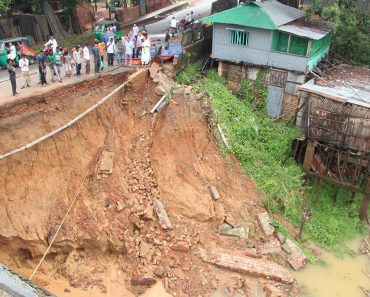There really isn’t a need for a big article today as this was just a quick on the fly video I made as I repaired stripped screw holes at my home. I came home from the store to my back door wide open and the bottom hinge ripped free from the frame. First, before […]
Month: January 2016
Landslides and Mudflows
Landslides and mudflows can do tremendous damage to property, as well as cause loss of life. If you want to ensure that your home is not vulnerable to landslides, get a ground assessment of your property. Your county geologist or county planning department may have specific information on areas vulnerable to landslides. Here are some […]
How to Flush the Toilet When the Water is Off
While remodeling my bathroom and having my water turned off I realized that some people (my wife being one of them) may not know how to flush the toilet when the water is off. Because of this I wanted to share a simple disaster pooping tip. This simple video shows a basic concept that […]
How to Make a Penny Battery
Making a penny battery is not a practical project. However, it is a practical bit of knowledge to keep in the back of your head. I used this knowledge to build a larger battery in a mason jar. The same type of science is what makes Edison Batteries work. What we are making today is […]
How to Make a Hot Wire Cutter
I have wanted to build a hot wire cutter for some time. Once I found out that Styrofoam could be used to make patterns for aluminum casting. This is because it would burn out in a manner similar to lost wax casting. I knew it was just a matter of time before I had […]





